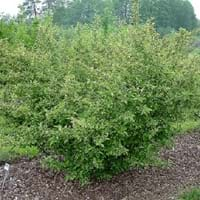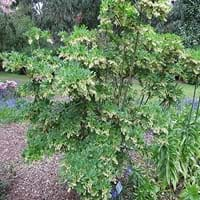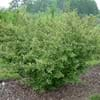Life Span
Perennial
Perennial
Origin
China
Southern Asia, India, Nepal, China
Types
Not available
Enkianthus campanulatus
Habitat
Hills, Lowland, Thickets
Islands
USDA Hardiness Zone
Not Available
7-9
Sunset Zone
Not Available
6, 7, 8, 9, 14, 15, 16, 17, 18, 19, 20, 21
Habit
Oval or Rounded
Spreading
Flower Color
Not Available
Light Pink, Rose, Ivory
Flower Color Modifier
Not Available
Bicolor, Striped
Fruit Color
Dark Red
Red, Green, Light Green
Leaf Color in Spring
Not Available
Green, Light Green
Leaf Color in Summer
Not Available
Green
Leaf Color in Fall
Not Available
Red, Orange, Orange Red
Leaf Color in Winter
Not Available
Not Available
Leaf Shape
Lobed
Elliptic
Plant Season
Spring, Summer, Fall
Spring, Fall
Sunlight
Full Sun, Partial Sun, Partial shade
Partial Sun, Partial shade
Growth Rate
Fast
Very Slow
Type of Soil
Loam, Sand
Clay, Loam, Sand
The pH of Soil
Neutral, Alkaline
Acidic, Neutral
Soil Drainage
Well drained
Well drained
Bloom Time
Not Available
Late Spring, Early Summer
Tolerances
Drought, Dry soil, Salt, Shade areas, Variety of soil types
Drought, Salt
Where to Plant?
Ground, Pot
Ground, Pot
How to Plant?
Cuttings, Seedlings
Stem Planting
Plant Maintenance
Medium
Low
Watering Requirements
Medium
Do Not over Water, Keep ground moist, Keep the ground moist but not water-logged, Never Over-water, Requires regular watering, Water less during winter, Water more in summer
In Summer
Lots of watering
Lots of watering
In Spring
Moderate
Average Water
In Winter
Average Water
Average Water
Soil pH
Neutral, Alkaline
Acidic, Neutral
Soil Type
Loam, Sand
Clay, Loam, Sand
Soil Drainage Capacity
Well drained
Well drained
Sun Exposure
Full Sun, Partial Sun, Partial shade
Partial Sun, Partial shade
Pruning
Remove damaged fruit, Remove damaged leaves, Remove dead branches, Remove dead leaves
Prune if you want to improve plant shape, Remove damaged leaves, Remove dead leaves, Remove dead or diseased plant parts
Fertilizers
All-Purpose Liquid Fertilizer
fertilize in spring, Nitrogen
Pests and Diseases
Pests and diseases free
Insects, Red blotch
Plant Tolerance
Drought, Dry soil, Salt, Shade areas, Variety of soil types
Drought, Salt
Flower Petal Number
Not Available
Single
Foliage Texture
Not Available
Medium
Foliage Sheen
Not Available
Matte
Attracts
Birds, Not Available, pollinators
Not Available
Allergy
Not Available
Not Available
Aesthetic Uses
Bonsai
Beautification, Cottage Garden
Beauty Benefits
Not Available
No Beauty Benefits
Environmental Uses
Fixes Nitrogen, Food for birds, Food for insects
Air purification, Erosion control, Food for insects, Prevent Soil Erosion
Medicinal Uses
Cough, Diarrhea, Vitamin A, Vitamin C, Vitamin E
No Medicinal Use
Part of Plant Used
Fruits, Seeds
Fruits, Leaves
Other Uses
Used as Ornamental plant
Air freshner, Decoration Purposes, Showy Purposes, Traditional medicine, Used as Ornamental plant
Used As Indoor Plant
No
Yes
Used As Outdoor Plant
Yes
Yes
Garden Design
Feature Plant, Foundation, Fruit, Fruit Tree, Mixed Border, Screening, Wind Break, Topiary, Bonsai, Espalier
Feature Plant, Mixed Border, Topiary, Bonsai, Espalier
Botanical Name
ELAEAGNUS multiflora
ENKIANTHUS deflexus
Common Name
Goumi, cherry elaeagnus, cherry silverberry, gumi, natsugumi
Enkianthus
In Hindi
Goumi
Enkianthus
In German
Goumi
Enkianthus
In French
Goumi
Enkianthus
In Spanish
Goumi
Enkianthus
In Greek
Goumi
Enkianthus
In Portuguese
Eau
Enkianthus
In Polish
Woda
Enkianthus
Phylum
Magnoliophyta
Tracheophyta
Class
Magnoliopsida
Magnoliopsida
Family
Elaeagnaceae
Ericaceae
Genus
Elaeagnus
Enkianthus
Clade
Angiosperms, Eudicots, Rosids
Angiosperms, Asterids, Eudicots
Tribe
Not Available
Heteromorpheae
Subfamily
Not Available
Enkianthoideae
Number of Species
Not Available
Season and Care of Goumi and Enkianthus
Season and care of Goumi and Enkianthus is important to know. While considering everything about Goumi and Enkianthus Care, growing season is an essential factor. Goumi season is Spring, Summer and Fall and Enkianthus season is Spring, Summer and Fall. The type of soil for Goumi is Loam, Sand and for Enkianthus is Clay, Loam, Sand while the PH of soil for Goumi is Neutral, Alkaline and for Enkianthus is Acidic, Neutral.
Goumi and Enkianthus Physical Information
Goumi and Enkianthus physical information is very important for comparison. Goumi height is 180.00 cm and width 180.00 cm whereas Enkianthus height is 240.00 cm and width 180.00 cm. The color specification of Goumi and Enkianthus are as follows:
Goumi flower color: Not Available
Goumi leaf color: Not Available
Enkianthus flower color: Light Pink, Rose and Ivory
- Enkianthus leaf color: Green and Light Green
Care of Goumi and Enkianthus
Care of Goumi and Enkianthus include pruning, fertilizers, watering etc. Goumi pruning is done Remove damaged fruit, Remove damaged leaves, Remove dead branches and Remove dead leaves and Enkianthus pruning is done Prune if you want to improve plant shape, Remove damaged leaves, Remove dead leaves and Remove dead or diseased plant parts. In summer Goumi needs Lots of watering and in winter, it needs Average Water. Whereas, in summer Enkianthus needs Lots of watering and in winter, it needs Average Water.





